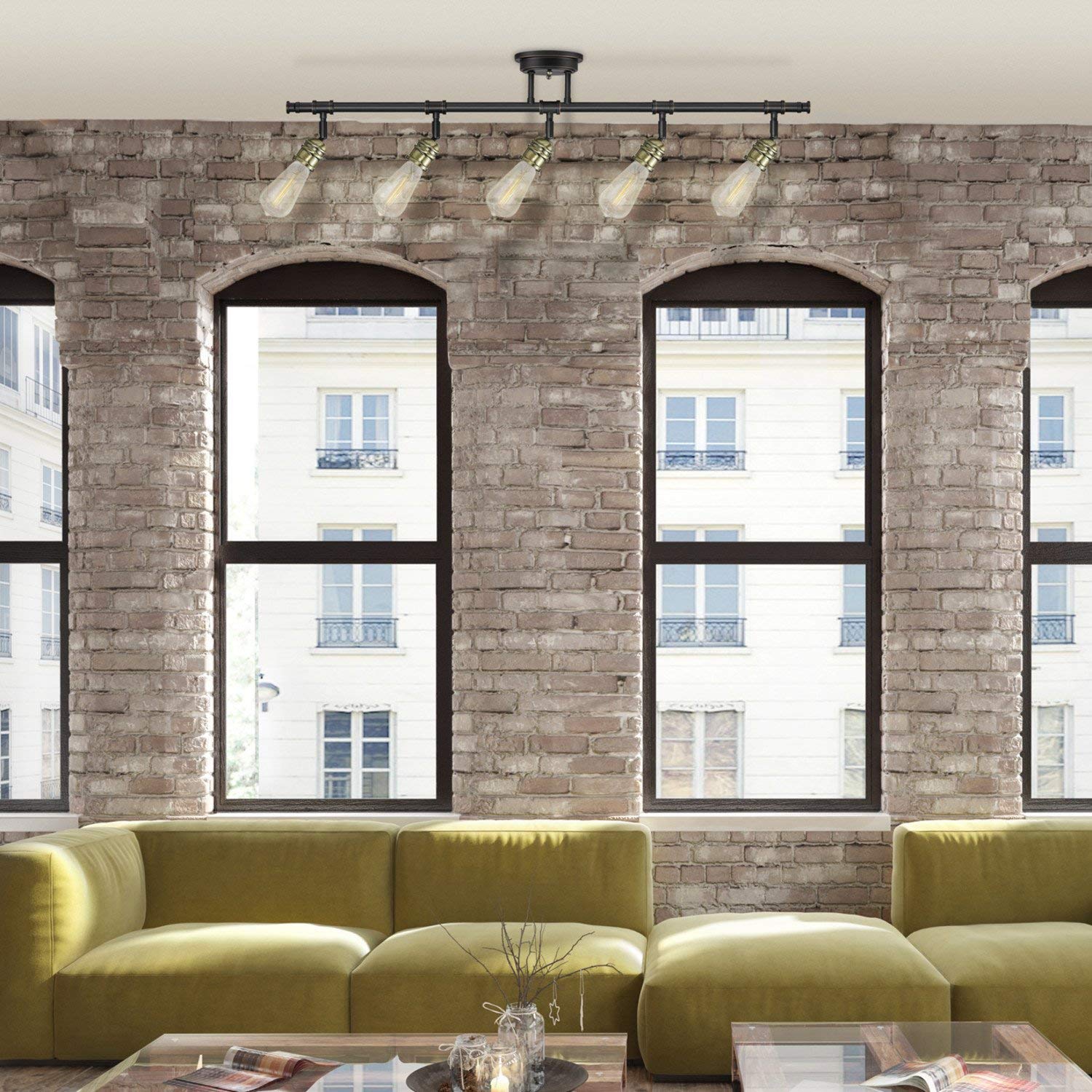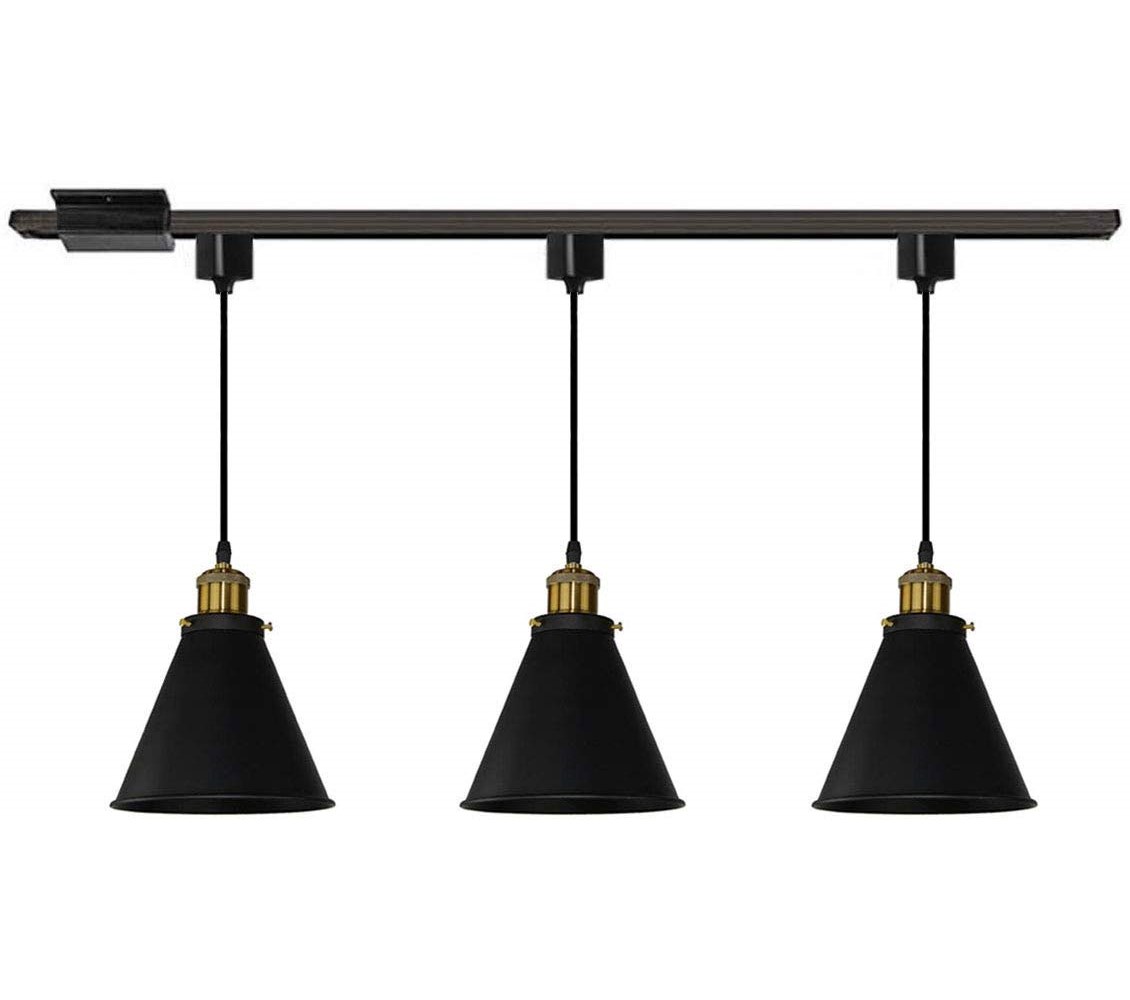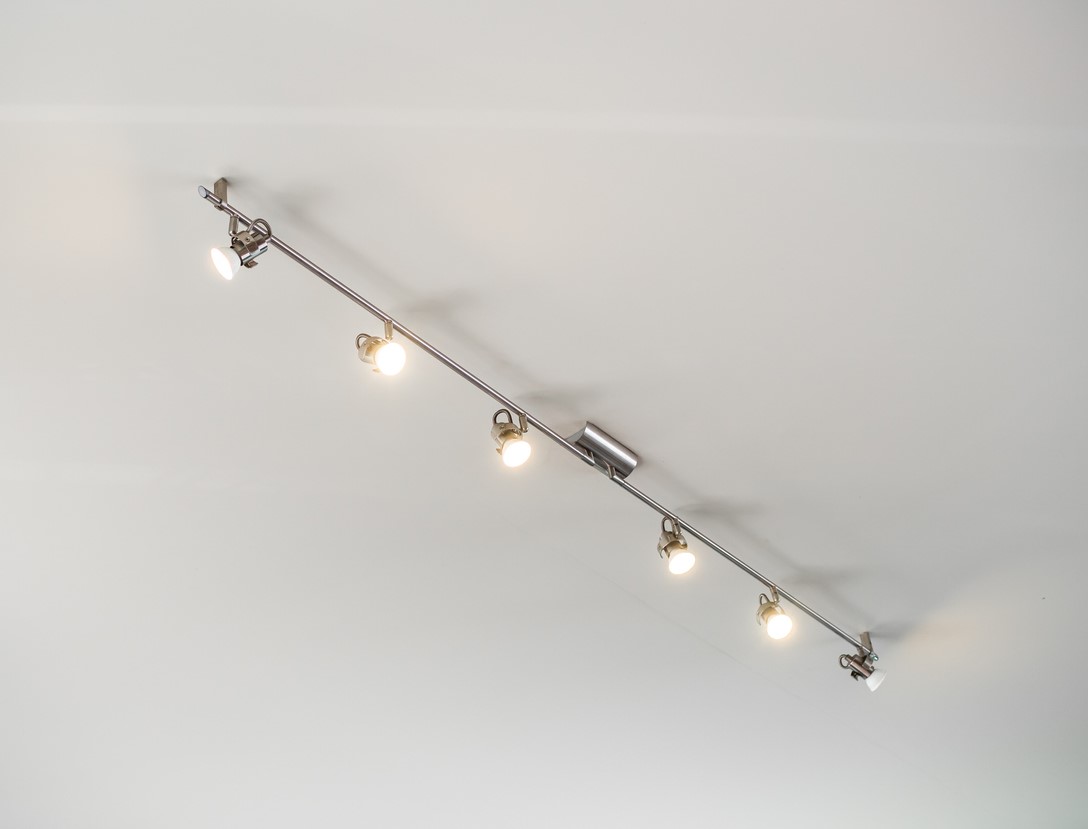We may earn revenue from the products available on this page and participate in affiliate programs. Learn More ›
In the evolution of illumination—from torches to torchiers—track lighting is a relative newcomer. While originally used in galleries, museums, and commercial installations, track lighting has become a popular choice for many homeowners today, regardless of whether they live in a sleek, contemporary dwelling or rustic, country cottage. And with good reason. Track lighting can add drama and a modern aesthetic everywhere from the bathroom to the finished basement and is relatively affordable and easy to install. Here’s all you need to know to bring the flexibility and flair of track lighting to your home.
What is track lighting?
Track lighting is very much what it sounds like: a track that screws into your ceiling and provides power for a series of independent lights that are suspended from it. Lights can be placed anywhere along the track and directed a variety of angles. Track lighting excels at calling attention to a specific workspace, piece of artwork, doorway, or architectural detail. If, however, you are looking for general illumination to light up an entire space, a standard ceiling fixture will cast a more dispersed glow.
RELATED: Which Lighting Where? 9 Pro Tips for Improved Illumination

As with most home lighting, there are line-voltage and low-voltage track lighting systems.
- Line-voltage systems use the standard electrical wires and current in the home, which provides 120 volts to the fixtures. These popular types of track lighting installations tend to use spotlights or floodlights and have the largest light fixtures.
- Low-voltage systems have a small transformer built in that takes the current down to 12 volts, allowing the system to use a greater variety of bulbs and light fixtures that are often much smaller than line voltage lighting but equally bright. Low-voltage track lighting bulbs also last longer; in the case of low-voltage LED systems, the lights can last an impressive 10,000 to 100,000 hours.

Homeowners will choose between two main types of tracks: straight and monorail.
The most basic type of track lighting system consists of a standard track (also called a “straight” or “linear track”) that holds the lighting fixtures. These tracks can come in one of three configurations: H, J, or L style, each named for the way in which the track is shaped internally. When buying new track lighting or replacing fixtures along an existing track, make sure the lights you choose match your track style.
Another popular system is the monorail track. This can come in a variety of styles but generally consists of a custom-formed track from which lights are suspended. So, if you have a curvy kitchen island, for example, you can get a monorail system that would follow its contours. This type of track comes in several options:
- Flexrail systems are pre-formed monorail systems that you can flex yourself.
- Suspended monorails are dropped down from the ceiling via a series of connectors.
- Two-circuit monorail systems allow you to work some lights with one switch and others with a second switch. In such a system, you could have one circuit operate spotlights aimed at particular areas while another could light pendants for dispersed ambient light.

These lights are available in styles as wide as those found for ceiling fixtures.
The most common lights you’ll see sitting along the rail in a track lighting system are called “track heads.” But you can replace the spotlights for drop-down pendants with gorgeous glass shades and much more. If you already have a track lighting system in your home, you can refresh it by just swapping out the track heads; just make sure you purchase new lights at the correct voltage and for the same style track.
If you already have a ceiling light fixture, track lights are easy to install.
The lighting kit is bound to include model-specific instructions that homeowners with some experience in replacing light fixtures should feel confident following. But the basic process for replacing an existing light fixture remains the same: After you remove the old light, screw the track into the ceiling using toggle bolts or other appropriate anchors and connect the new track to the electrical box. Then, snap your lights in place and enjoy the fun of moving them around to get the lighting in your room exactly the way you want it!

